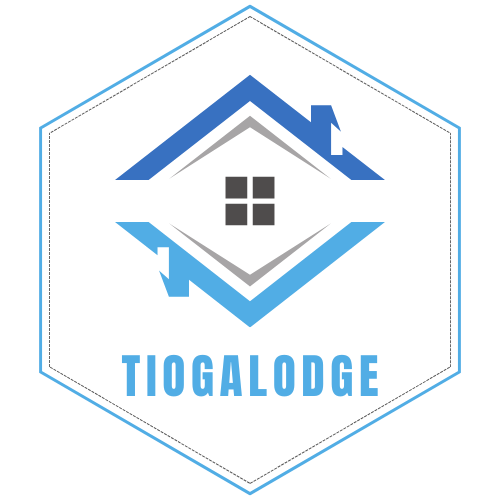Table of Contents
ToggleNavigating the world of home buying can be overwhelming, especially when it comes to understanding down payments. This crucial upfront cost often determines not just the affordability of a home but also the buyer’s financial future. For many, saving for a down payment is the first significant step toward homeownership and can influence mortgage rates and monthly payments.
In today’s housing market, knowing the ins and outs of down payments is essential. Whether one is a first-time buyer or looking to upgrade, grasping how much to save and the various options available can make all the difference. From conventional loans to government-backed programs, the right down payment strategy can pave the way to achieving that dream home.
Understanding Down Payments
Down payments play a vital role in home purchases. This upfront cost influences mortgage options, affordability, and long-term financial stability.
Definition of Down Payment
A down payment represents the initial sum of money a buyer pays toward the purchase price of a home. Typically, it ranges from 3% to 20% of the property’s purchase price, depending on the mortgage type and lender requirements. For instance, a $300,000 home may require a down payment of $9,000 to $60,000. This payment reduces the total loan amount, impacting monthly mortgage payments and overall interest.
Importance of Down Payments
Down payments significantly affect several aspects of homeownership. They determine mortgage approval odds and influence the interest rates lenders offer. A larger down payment can lead to lower monthly payments, reduced private mortgage insurance (PMI) costs, and improved equity in the property from the outset. Additionally, saving for a substantial down payment reflects financial discipline, enhancing a buyer’s credibility with lenders and making the overall home buying experience smoother.
Types of Down Payments

Understanding the various types of down payments is essential for buyers aiming to make informed financial decisions during the home buying process. Buyers can choose between conventional down payments and government-backed down payments, each with distinct features and requirements.
Conventional Down Payments
Conventional down payments refer to payments not backed by government agencies. These down payments typically range from 5% to 20% of the home’s purchase price. A larger down payment frequently results in lower monthly mortgage payments and better interest rates. Homebuyers can avoid private mortgage insurance (PMI) when they pay at least 20% upfront. Conventional loans offer flexibility concerning loan amounts and terms, making them favorable for many buyers.
Government-Backed Down Payments
Government-backed down payments are designed to assist specific buyer populations, including first-time buyers and low-to-moderate-income individuals. Programs such as FHA, VA, and USDA loans provide down payment options that might require as little as 0% to 3.5%. FHA loans often need a minimum of 3.5%, while VA loans do not require any down payment for qualifying veterans and active-duty service members. USDA loans, aimed at rural homebuyers, also offer zero down payment options. These programs can enhance affordability and broaden access to homeownership for those who qualify.
Factors Influencing Down Payments
Several factors affect the amount of down payment required when purchasing a home, impacting buyer eligibility and mortgage conditions. Understanding these factors can help buyers make informed decisions.
Credit Score Impact
Credit scores significantly influence down payment amounts. Higher credit scores generally lead to lower down payment requirements. Borrowers with scores above 740 often qualify for optimal mortgage terms, including down payments as low as 3%. In contrast, those with scores below 620 may face higher down payment expectations, sometimes reaching 10% or more. Lenders view lower credit scores as higher risk, prompting them to seek larger down payments to mitigate potential losses.
Property Type Considerations
Property type affects down payment requirements directly. Primary residences usually entail lower down payments compared to investment properties. Buyers of primary homes may qualify for FHA loans with down payments as low as 3.5%. Investment properties, on the other hand, often require down payments of at least 20%, driven by increased lender risk. Additionally, the property’s location and condition can impact down payment amounts; for example, properties in high-demand areas may require more significant investments upfront to secure favorable terms.
Strategies for Saving for a Down Payment
Saving for a down payment requires effective strategies. Implementing budgeting techniques and exploring assistance programs can significantly enhance the ability to accumulate funds for this vital expense.
Budgeting Techniques
Creating a budget serves as the foundation for saving effectively.
- Track Expenses: Identifying where money goes monthly helps pinpoint areas to cut back. This awareness allows for reallocating funds toward savings.
- Set Savings Goals: Establishing a specific amount and timeline for the down payment increases motivation. Dividing the total down payment into manageable monthly goals simplifies the saving process.
- Automate Savings: Automatically transferring a set amount into a savings account helps maintain consistency in savings efforts. Automation minimizes the temptation to spend the earmarked funds.
- Reduce Non-Essential Spending: Cutting back on dining out, subscriptions, and luxury purchases frees up additional cash for savings. Making small sacrifices in daily life can lead to substantial savings over time.
- Use Windfalls Wisely: Funnel bonuses, tax refunds, or gifts directly into down payment savings. This approach accelerates progress toward the goal without impacting daily budgeting.
Assistance Programs
Exploring assistance programs can ease the burden of saving for a down payment.
- FHA Loans: Federal Housing Administration loans allow down payments as low as 3.5% for qualified buyers, enhancing accessibility to homeownership.
- VA Loans: Veterans Affairs loans enable eligible veterans to purchase homes with no down payment. This option significantly reduces upfront costs.
- USDA Loans: U.S. Department of Agriculture loans serve rural buyers, offering zero down payment options for eligible low-to-moderate-income applicants.
- Down Payment Assistance (DPA) Programs: Many states and local governments offer DPA programs that provide grants or loans to cover part of the down payment. Researching local programs can reveal beneficial opportunities.
- Employer Homebuyer Assistance: Some employers provide down payment assistance as an employee benefit. Inquiring about these programs can unveil additional resources for potential homeowners.
Understanding down payments is essential for anyone looking to buy a home. They play a pivotal role in shaping the financial landscape of homeownership. By recognizing the various options available and the factors that influence down payment amounts, buyers can make informed decisions that align with their financial goals.
A well-thought-out down payment strategy not only enhances affordability but also strengthens a buyer’s position in the eyes of lenders. With the right approach to saving and budgeting, aspiring homeowners can take significant steps toward achieving their dream of owning a home. Embracing the journey of homeownership becomes more attainable when buyers prioritize their down payment planning.




